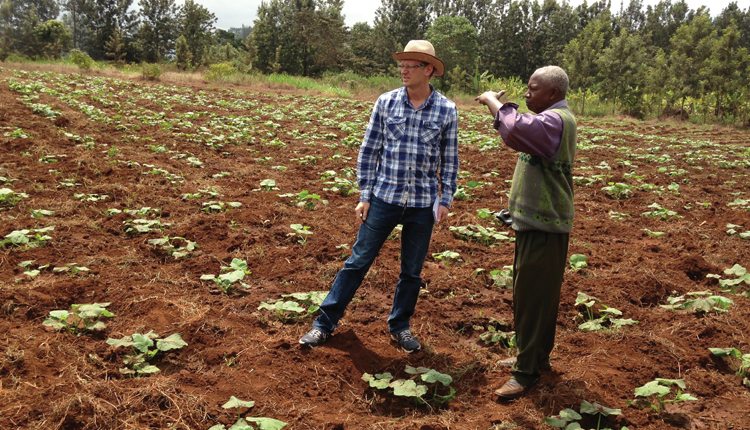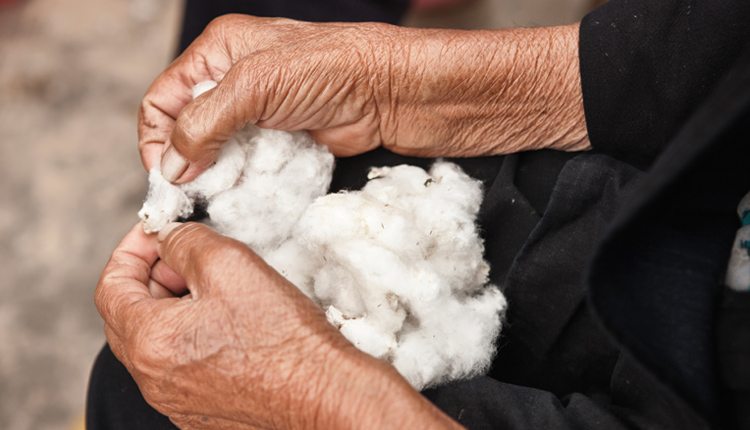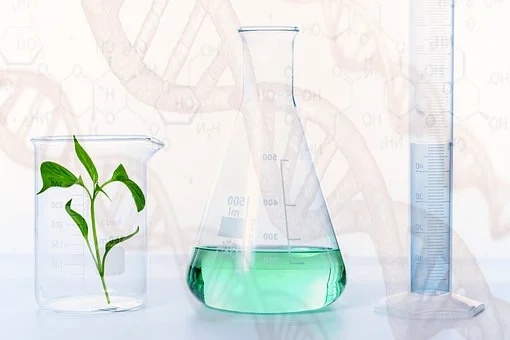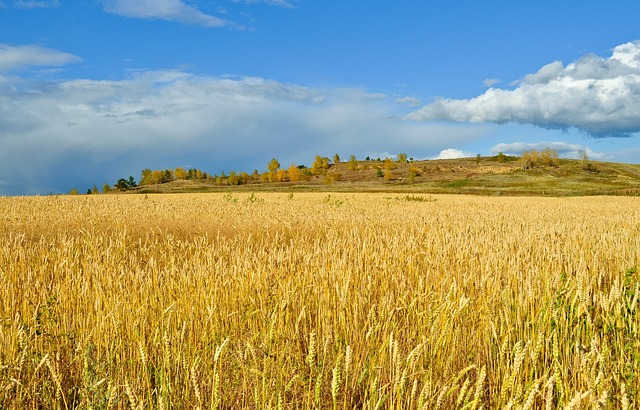Imagining a world without genetically modified organisms isn’t hard to do, but researchers say the prospect is detrimental to both farmers and consumers.
U.S. researchers have a mathematical model at their disposal, which allows them to envision what the country, and the world, might look like if a certain situation were to play out, such as differing levels of biofuel production. That’s exactly how Wally Tyner started using Purdue University’s computable general equilibrium (CGE) models.
Most recently, Tyner, a Purdue agricultural economist, and other researchers asked what the economic and greenhouse gas emission impacts would be if genetically modified organisms (GMOs) were banned in the United States.
Knowing that 18 million farmers in 28 countries plant about 181 million hectares of GMO crops in 2014, with about 40 percent of that in the United States, they fed that data into a version the CGE model that’s designed to examine the economy-wide impacts and land use consequences of agricultural, energy, trade and environmental policies.
The results paint a surprising picture of what would be in store if GMOs were banned in the United States.
Lower Yields, Higher Emissions
“We use this model all the time, but it’s the first time we’ve used it for the GMO question,” says Tyner who co-authored the study funded by the California Grain & Feed Association. “The results really surprised us.”
The results: serious yield declines, higher food prices and a major loss of forest and pasture land. Corn yield declines of 11.2 percent on average would be seen across the United States. According to the results, soybeans would lose 5.2 percent of their yields and cotton 18.6 percent.
To make up for that loss, about 252,000 acres of forest and pasture land in the United States would have to be converted to cropland.
Those results are startling, but they’re not what surprised Tyner most.
The study demonstrates that if GMOs were banned inthe United States, greenhouse gas emissions would increase significantly because more land would be needed for agricultural production.
“When yields go down, you need more land to meet demand,” Tyner says, explaining that forest and pasture land would get converted to cropland. “That releases stored-up carbon, and so you have an increase in emissions.”
In other words, the increase in greenhouse gas emissions that would come from banning GMOs in the United States would be greater than the amount needed to create enough land to meet federal mandates of about 15 billion gallons of biofuels, Tyner shares.
“Some of the same groups that oppose GMOs want to reduce greenhouse gas emissions to reduce the potential for global warming,” he says. “The reality of it seems to be that you can’t have it both ways. If you want to reduce greenhouse gas emissions in agriculture, an important tool to do that is with GM traits.”
GMOs and the Developing World
The extra quarter-million acres of land that would have to be cultivated in the United States if GMOs were banned is significant but is minor when compared to the amount of extra farmland that would be needed on a global scale if GMOs were banned in the developing world.
Matin Qaim, a professor of international food economics and rural development at the University of Göttingen in Germany, has studied GMO policy for 20 years. His book “Genetically Modified Crops and Agricultural Development” was released earlier this year.
“If we banned GMOs worldwide, we would require around 25 million hectares, almost 62 million acres, of additional land to be taken into cultivation to make up for the production loss these crops currently produce,” Qaim says. “That’s huge. It’s double the cropland in Germany alone.”
Qaim’s research examines the impact GM crops have had in developing nations, specifically Africa, South America, India and China. His research finds that GMOs are even more beneficial for farmers in the developing world than in developed nations.
“The effects of a total GMO ban would be larger in developing countries, since the benefits are larger there,” he says. “When we look at Bt crops that provide resistance to insect pests, this is a technology that is particularly useful in areas where you have a lot of pest pressure.”
“In the typical situations faced by small scale farmers in the tropics and subtropics of Africa and Asia, you do have a lot of uncontrolled pest damage. Once farmers switch to those resistant crops, they are not only able to reduce pesticide use, but they also have more effective pest control, and that means higher yields.”
If a Bt crop can boost yields in the United States by 10 percent, in many other parts of the world including India, China, South and West Africa, farmers see yield gains of 30 to 40 percent and sometimes higher than that, Qaim’s research shows.
Take those GM crops away, and those benefits disappear as well, he says. It’s not just their yields that would suffer, though.
“When they switch to growing GMOs, they suddenly have 50 to 60 percent higher profits,” Qaim explains. “The reason for that is most of the GMOs are not patented in developing countries.
“That means the seeds are relatively cheap, so farmers use them and gain most of the benefits. In the United States, a lot of these seeds are patented, which means some of the financial benefits are captured by the innovating companies.”
Lower profits translate into a lower standard of living for farmers in the developing world if GM seeds are banned. Qaim’s research on Bt cotton in India tracked a sample of several hundred farmers for many years, and Bt adoption led to profit gains for these small farmers of 50 percent.
“They had more money to spend on food and other things, and overall we found it did contribute significantly to reducing poverty and reducing food insecurity by about 20 percent among those growing cotton,” Qaim says. “GMOs have a real measurable impact on farmers’ livelihoods at the micro-level.”
Tyner and his team are working on a GMO study that will take a more global look at what might happen if GMOs were banned. The global study will not only take yield declines into account, but will also factor in the effects of increased costs — which directly impact standard of living.
“People tend to fight GMOs because they think only corporations benefit, but Bt cotton provides a real-world example of small-scale farmers in India and China benefiting and lifting themselves out of poverty because of biotechnology,” Qaim adds.















